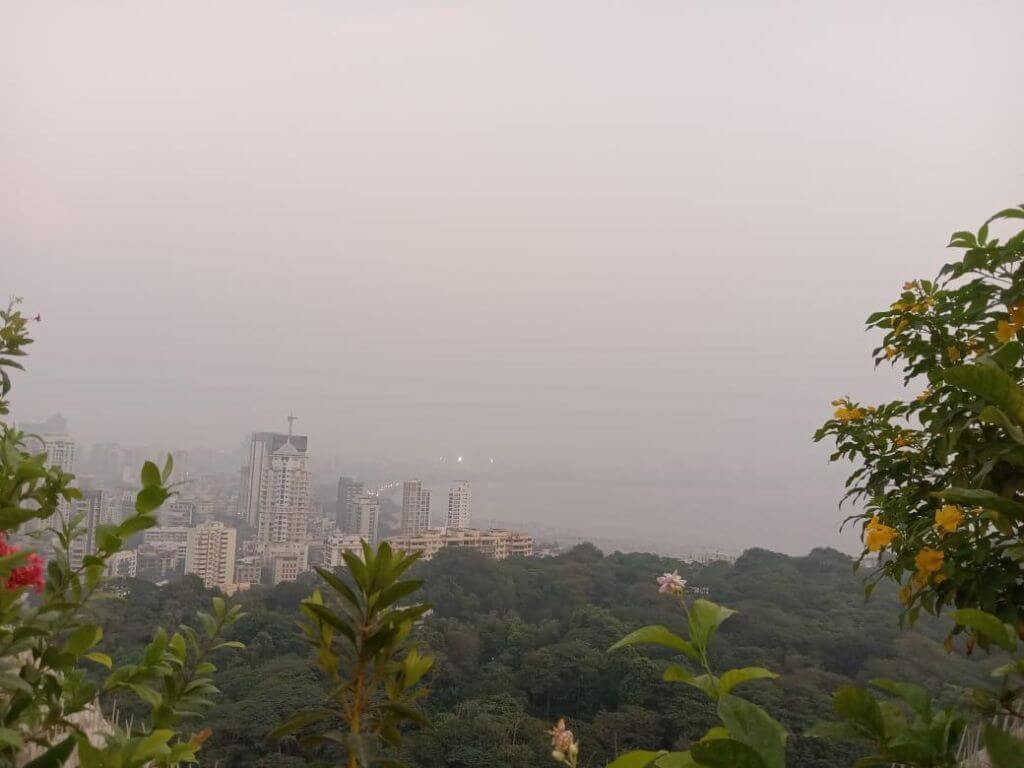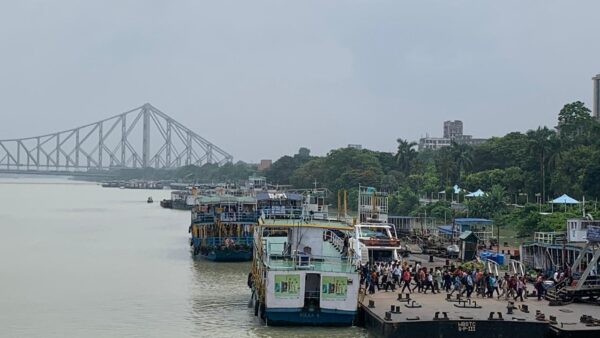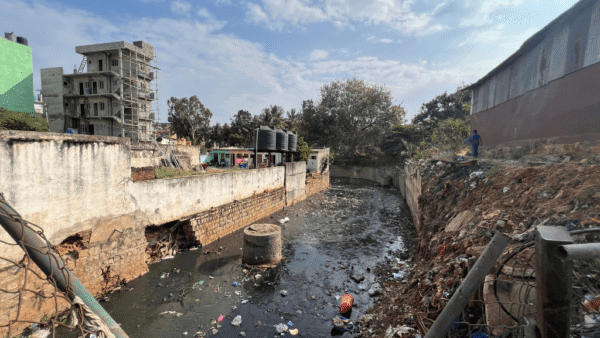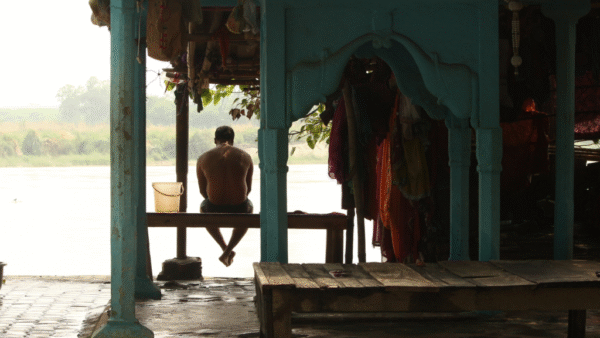New Delhi’s Air Quality Index was broken during Diwali – this year, again. Flagrant flouting of rules about firecrackers worsened the haze created by vehicle emissions and stubble burning, leading to a steep hike in the AQI and some areas touching an alarming 970 during the festival.[1] Days before that, many areas had recorded above 400-430 on the index landing in the ‘severe’ zone. During Diwali, despite the ban on the manufacture, storage, sale and bursting of firecrackers till January 1, 2024[2], people allowed themselves to burn the gunpowder.
As in the national capital, the air quality in cities like Mumbai (see photo above where the iconic Queen’s Necklace has disappeared behind the haze) and Kolkata was also severely affected when firecrackers added to the pollution load. The festival ritual may not be the single cause or largest cause of dipping air quality but its contribution to rising AQI cannot be denied. While air pollution is a year-long issue that requires in-depth systematic studies, comprehensive action plans, and collaborative effort by several agencies, the onset of winter with its heavier air, vehicle emissions, and Diwali celebrations with firecrackers calls for a considered action plan rather than acting blindsided, as Delhi’s governments do. Poor air invariably means poor health too. Year 2019 saw 2.3 million deaths in India[3], and approximately 9 million deaths globally due to air pollution[4] – this number will only rise given the current trajectory.
Air pollution is not the only undesirable outcome of festivals and large-scale celebrations. There’s also noise pollution that’s equally hazardous to human and animal health, and waste management which most of India’s cities struggle with. Pollution and waste are the by-products of festival celebrations, inevitable especially when celebrations happen in large numbers, but hardly make it to serious discussions and policies in our cities. It cannot be a choice between publicly celebrating festivals and preserving the environment. Where does the golden mean lie?
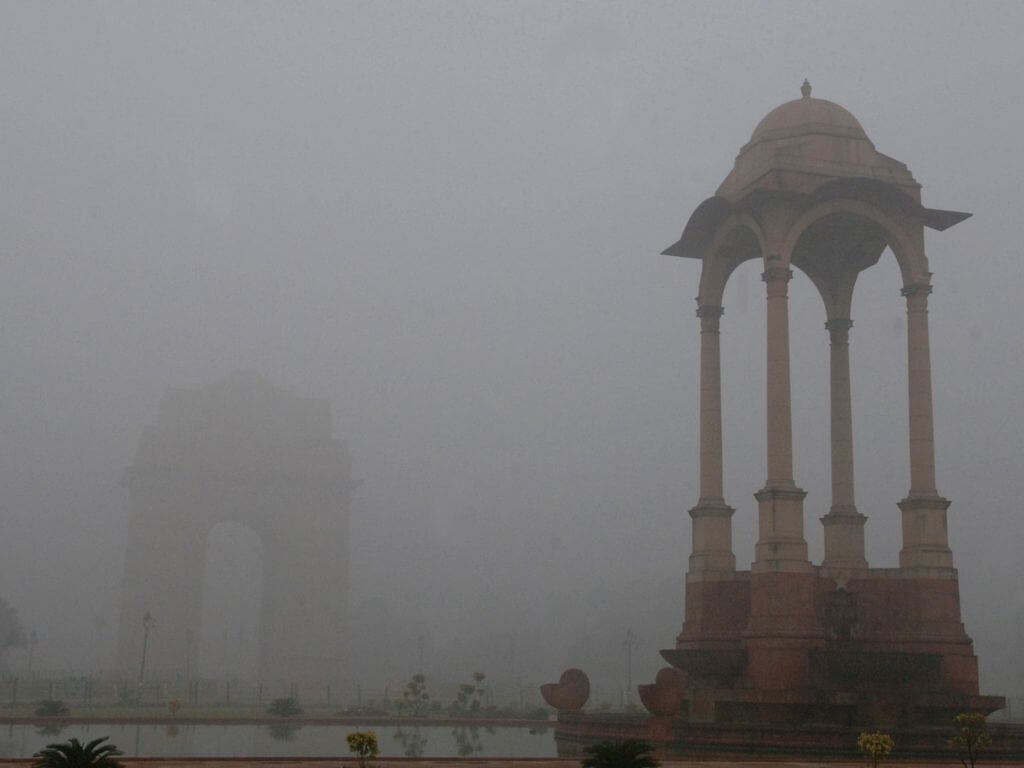
Photo: Ministry of Environment, Forest and Climate Change/ Creative Commons
Known problem, no respite
Coughing away as he waits for the red light to turn green, 50-year-old Vijay Patel is one of many Mumbaikars bracing for the impact of increased pollution during festival season. For the last three decades, Patel’s life as an autorickshaw driver has been fulfilling but with occupational health troubles. “I drive from 8am to 9pm in an open rickshaw. My cough persists throughout the year but it got worse last week. You can’t even see the road clearly these days, sometimes you can taste the air,” says Patel.
Many have taken to masking themselves, men often managing with a folded handkerchief and women using dupattas as face covers. “Madam, Mumbai mein rehna hai toh riks lena padega – health riks,” Patel remarks, mentioning how many of his friends, also auto rickshaw drivers, have been falling sick. They hear, from municipal doctors: “This is normal, it’s just bad weather.” The ailment stories from northern cities are worse.
India’s cities are seeing rapid urbanisation and migration, thanks to job opportunities.[5] Densely packed with high populations and human activities, cities “often face dramatic problems of pollution and related risks.” Nine of 10 people living in urban areas worldwide are breathing air that does not meet WHO’s guidelines.[6]
When the overlap of festival season and winter occurs, a decline in air quality is one of the first visual cues of pollution. Simple slogans, odd-even car schemes, and such measures hardly help; authorities regulating or banning festivities and firecrackers is seldom received well. Even as Diwali drew near this year, cities reported alarming numbers on the AQI[7] Some areas in Mumbai reported ‘poor’ air quality with AQI of over 200.[8] Kolkata’s air quality dropped to ‘poor’ as well, with some areas reporting 249.[9] Winter months in Guwahati come with an increase in dust pollution, resulting in AQI of over 200.[10] Delhi, in fact NOIDA, was already at a staggering 695.[11]
Such off-the-grid numbers cannot but have an impact. General practitioner Dr Neha Mehta, based in Mumbai’s Vile Parle, says, “I see a lot of patients lately with bronchial asthma, allergies, sore throat and viral infections. These seem common but they are definitely worse between October and January, especially in this haze.”
Back in 1999, news reports read like this: “Life in Delhi is a capital punishment. The city’s air is so polluted it claims a victim every hour.”[12] Nearly 25 years later, headlines in the international press read: “The AQI in New Delhi for PM2.5 – a particularly hazardous pollutant known as particulate matter 2.5 – reached 285 or “very unhealthy”[13]
PM10 to PM2.5 refer to the tiny Particulate Matter spanning fractions of the width of a human hair which move into lungs and bloodstream to cause a host of ailments. Research[14] shows a connection between extended exposure to air pollutants and ischemic stroke, with children, the elderly and the poor being more susceptible to respiratory infections, heart disease and lung cancer.[15]
After 25 years of re-living a condition every year, despite doctors, scientists, health experts and toxicologists around India outlining the harm caused by poor air, that viable solutions are yet to be found tells its own story. Toxic air pollutants are extremely harmful to children, the elderly and outdoor workers. Swagata Yadavar, independent journalist writing on equity and healthcare, says, “Delhi has always had a pollution problem but it’s more visible during Diwali – that’s when people start to care…Nobody likes to be criticised for celebrating festivals but there has to be a way forward, it can’t be smog towers or talking air pollution in the last three months of the year.”
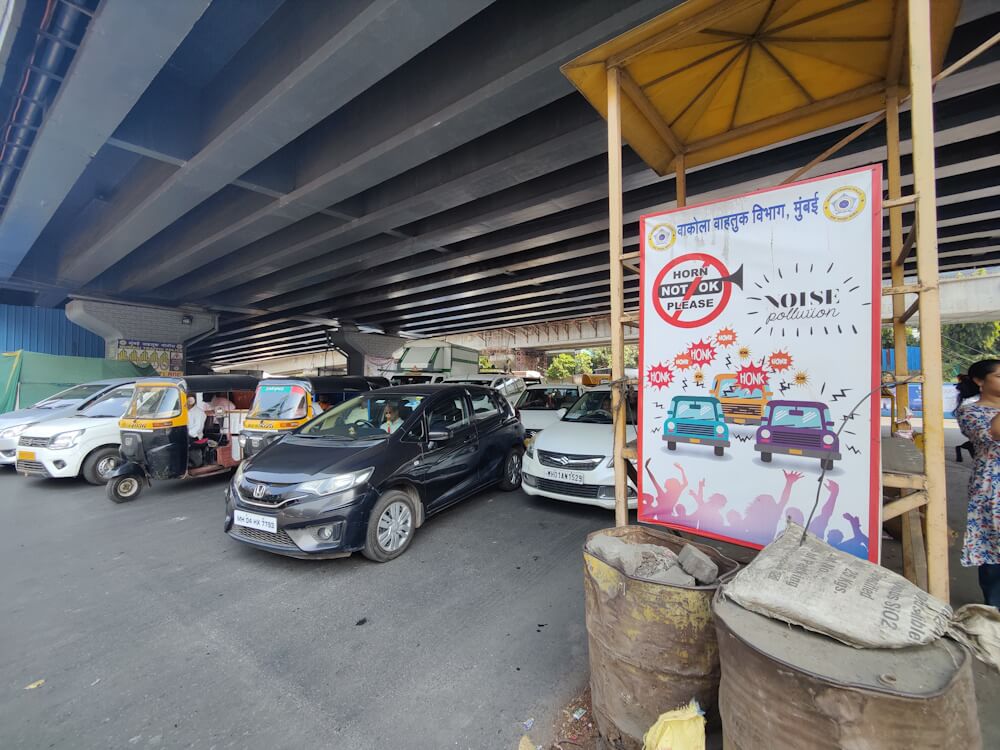
Photo: Shivani Dave
Louder is not better
Festivals are nothing without an orchestra of sounds but it does not take long to turn into annoying polluting noise. Police Inspector Shashikant Yadav, responsible for keeping it down in Vile Parle (East) suburb in Mumbai, resignedly says: “There is a sense that louder and noisier celebrations mean better celebrations – that’s not true.”
The Noise Pollution (Regulation and Control) Rules 2000 allow a maximum of 55 decibels in residential areas and 50 decibels in silent zones, and no use of loudspeakers between 10pm and 6am except during the 15 days of exemptions decided by local governments.[16] Prolonged exposure to noise above 70 decibels may damage our hearing, persistent loud noise above 120 decibels can cause immediate harm.
Come Diwali days and our ears are exposed to anywhere between 140 and 160 dB – the average range for firecrackers. During Ganpati Visarjan, up to 120.2 dB was reported from some parts of Mumbai while an Eid-e-Milad procession registered 108.1 decibels on the sound meter.[17] “There are rules in place even during festivals. Loudspeakers require licences and permissions, and loud noise is not permitted after 10pm. However, these can be relaxed for a few days,” PI Yadav adds. A common grouse across Mumbai is that the cops do not respond when people call in with even specific complaints – and revellers make merry mocking the Noise Rules.
The standards for firecrackers prohibit “the manufacture, sale or use of firecrackers generating noise level exceeding 125dB or 145dB at 4 metres distance from the point of bursting”.[18] Firecrackers are packed with noxious chemicals that harm the human and animal body.[19]
The Supreme Court has passed more than 100 orders in the past eight years but these have had little impact.[20] This Diwali, several cities and states adopted a limited time window during which firecrackers could be used[21] but even this was flouted leading to high noise levels. Several areas in Mumbai showed 109.1 dB this year, as recorded by Awaaz Foundation.[22]
This double whammy of firecrackers, air and noise pollution, forces the question if they should be banned completely – an extreme move that may become necessary.
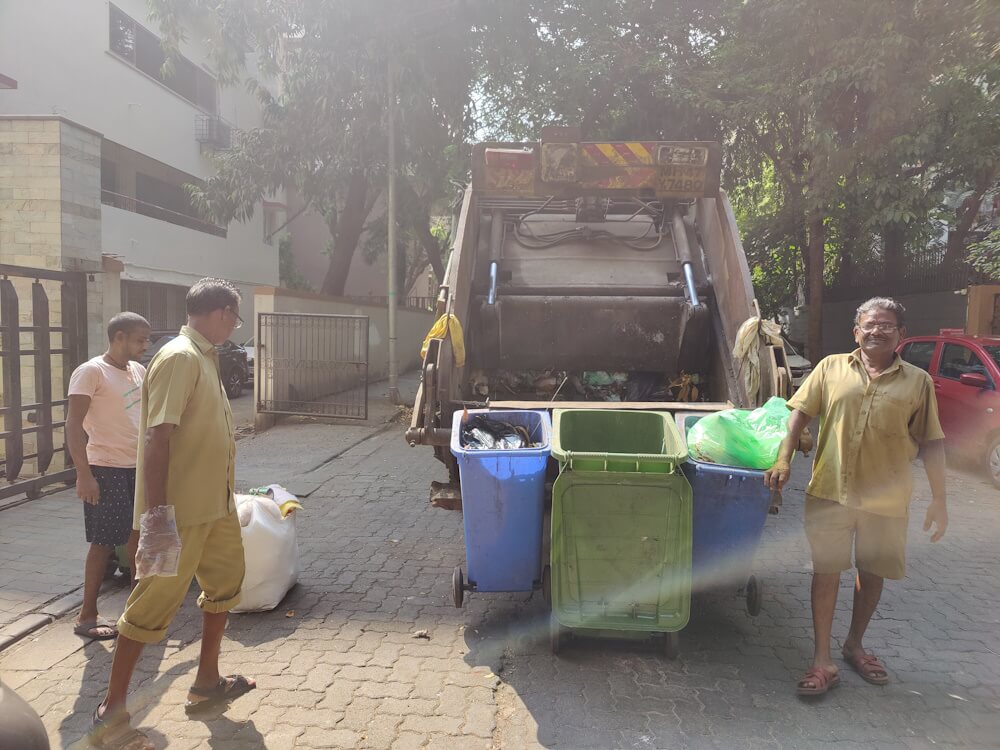
Photo: Shivani Dave
Increased waste, same old system
The aftermath of festival celebrations is not merely on people but on the neglected waste management systems in cities. Typically overloaded and inefficient, they nearly crumble under the increased load during festivals.
Municipal worker Sundar, 50, hangs on the tail-end of Mumbai municipal corporation’s garbage truck on its rounds around 12.30pm to collect waste. He and his colleagues fervently empty smaller trash cans into the truck and clip the larger cans with waste from housing societies and commercial establishments to the truck’s trash emptying system one by one. They crack jokes; it hardly helps to deal with the extra trash that inevitably follows every festival.
Waste picker Niraj, 35, follows the truck with his cart. “After Diwali, I’ll collect a lot of cardboard to recycle. We get Rs 2 per kilo of cardboard, so when people throw their firecracker boxes and lanterns, it’s our time to shine.” On another corner, waste picker Sadhu Yadav, 52, has a full cart. “I’ve been collecting household items that people discard during Diwali cleaning of their homes. I found some switches, an old clock, and, of course, a lot of cardboard.”
Diwali 2022 saw an increase in daily waste production in Mumbai by 15-20 percent[23] Similarly, Pune’s SWaCH workers collected 150 tonnes of floral offerings after Ganeshotsav this year.[24]
Pune has its “Nirmalya to Nisarga” initiative to compost organic festival waste but, in Mumbai, Sundar’s truck on its way to a landfill is a mix of wet and dry waste. “Normally, there’s one or two large dustbins but during festivals, people’s bins overflow. Besides the bins, we have to collect all the extra bags, flower waste, and other miscellaneous waste kept around the bins as well. Our shift timings, number of trucks and workers allocated remains the same,” he laments.
Dr Rajarshi Mitra, assistant professor, Indian Institute of Information Technology in Guwahati, spoke how Durga Pujo festivities are “primarily pastoral and agricultural, causing minimum harm to the environment” but, lately, themed pandals[25] for Durga idols have become a fad in Kolkata, drawing in more people and generating more waste. However, Mitra noted that the “responsibility of clearing up pandals lay with the people who set them up.”[26]
Cities are yet to see enough attention and resources given to waste management during festivals. By burdening a city’s overflowing landfills during festival season, we only ensure that more harmful chemicals contaminate the air, water, soil compounding the Climate Change impact.
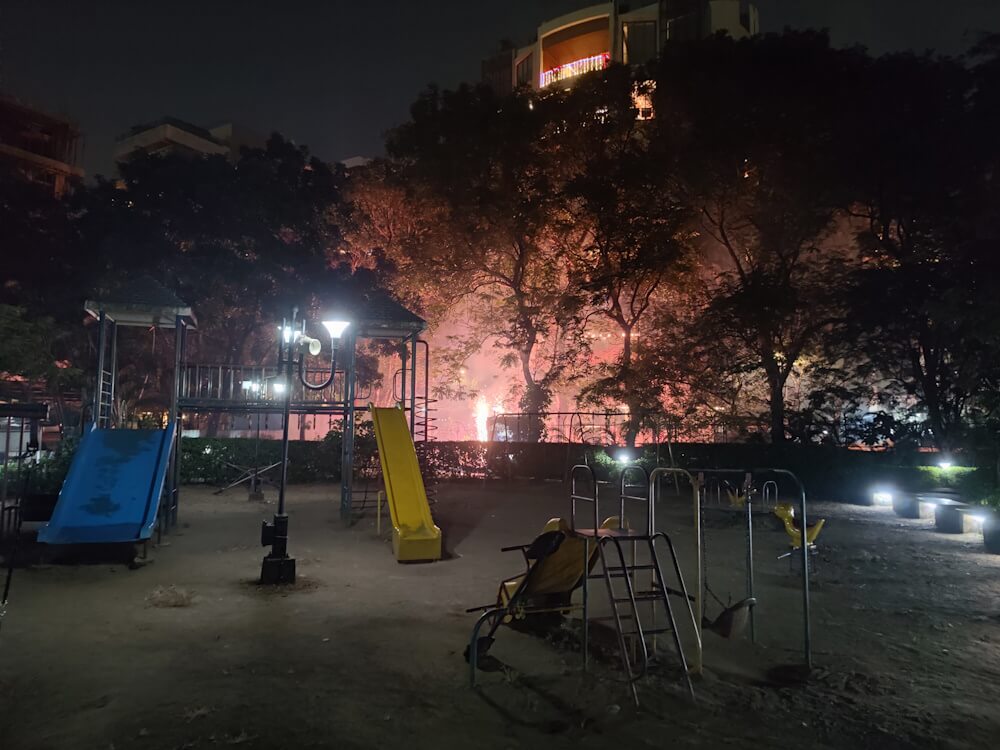
Photo: Shivani Dave
Ways to consider
With idol immersion being a significant ritual in many Indian festivals, revised guidelines to make this practice more sustainable were introduced by the Central Pollution Control Board[27] a few years ago. Like Dr Mitra, people recall simpler idols of goddess Durga “made of clay taken from river Ganga and immersed in the river, cyclically” so there’s not much waste generated. Recent iterations use Plaster of Paris, as do idol-makers of the elephant-headed god in Mumbai and Pune. Local authorities have banned use of PoP and toxic colour[28] on the idols, but there are no real penalties for breaking such bans in either city.[29]
Immersions increase toxicity levels in rivers or seas near cities, adding to the industrial contamination and untreated sewage. Pune’s rivers – Mula, Mutha and Pavana – recorded an increase in chemical oxygen demand (COD) and biochemical oxygen demand (BOD) this Ganeshotsav indicating an increase in the amount of waste.[30]
Visakhapatnam also encountered a significant problem during Ganesh idol immersion which led to the clogging of its water bodies, including at Jalari Peta where residents found broken idols and trash washing up the shore for days after the immersion. The waste was eventually cleared by both the civic body and the residents. Dr Neha Mehta believes it is time to promote ways to do things differently. “At-home immersion is always possible. We need to seriously think of sustainable ways to celebrate our festivals – become plastic-free, use eco-friendly paints and dyes, and ensure cleanliness.”
Celebrated in their originating non-urban environment and non-commercial manner, most festivals, like Bihu in Assam, do not pose a challenge to the environment. “Since it’s a community festival, it is in an open area, usually in empty paddy fields. Personal celebrations are rare, the whole community gathers to eat, dance and do activities on allocated grounds,” explains Barasha Das, Guwahati-based journalist, on how Bihu celebrations are in tandem with agricultural practices. Similarly, Dr Mitra says that during Durga Pujo, “loudspeakers are allowed but only traditional songs are played, at a respectable volume, and usually shut after 10pm – I have never seen anyone bursting firecrackers either”.
Swagata Yadavar, who has recently moved to Ahmedabad, observed that “Most big and loud Navratri celebration grounds were on the outskirts of the city.” So people made merry without worrying about dB levels and hardly anyone was disturbed.[31] The Eco-Vizag, to enhance Visakhapatnam’s environmental sustainability, focuses on five key aspects: Eco-Clean (clean surroundings with effective waste management), Eco-Green (urban greenery, community gardening, home composting), Eco-Blue (rainwater harvesting, clean beaches, water conservation), Eco-Zero Plastic (environmentally friendly alternatives, recycling of plastic), and Eco-Zero Pollution (pollution control). Enforcement teams are set up to monitor businesses, including hotels and restaurants to promote alternative environmental-friendly products to plastic and strictly prohibit single-use plastic.
People’s participation in festivals is not only integral to their lived experience but also to claim their space in the city to make it feel their own — “City is no city without events…Where a community exists, their festival can be expected to be celebrated. Festive spaces, thus, form vital community spaces”.[32] The change is slow, the challenges many, but time windows for firecrackers, Nirmalya to Nisarga initiative, following state guidelines, and self-awareness are steps that could help to balance celebrations and resulting pollution.
With inputs from Amrutha Kosuru (Vishakhapatnam).
Shivani Dave is an architect, writer and illustrator interested in exploring the intersection of architecture and social sciences. After graduating in architecture from Mumbai, and in media from the London School of Journalism, she is applying the fundamentals of architectural research and writing within urban contexts to develop phenomenological ideas about life in cities. She researches, writes and illustrates in Question of Cities.
Cover photo: Mumbai’s iconic Queen’s Necklace, Marine Drive, hidden behind a shroud of polluted air, by Vickram Crishna

